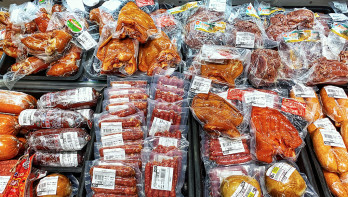Feature Pigs & Pork
Trade conflict with China threat to square valorization
Despite a significant decline in pork exports to China, a potential export stop to the country could have serious consequences for the sector. If the export comes to a halt, it remains uncertain where the European sector should place its residual parts.
China has taken the next step in the recent trade war with the European Union. Now that Europe wants to impose a tariff of 38.1% on Chinese electric cars, China threatens to ban European agricultural products. The country started an investigation weeks ago into dumping of European silk. China has now taken the next step. Chinese state media reported that Chinese companies have asked the government to start an anti-dumping protocol.
At first glance, this may not seem like a problem. Chinese pork exports are low, and due to high European pork prices, there seems to be no immediate change. Between August 2019 and June 2021, exports were significant. Due to an outbreak of African swine fever (ASF), exports during this period rose to well over 150,000 tons. Then exports declined back to pre-outbreak levels, but since the war in Ukraine, exports have dropped even further. Since April 2023, exports have been structurally below 100,000 tons, except for one month. Before the war, such an export figure was exceptional.
Organ meat remains constant
When it comes to pork, there is little to lose. Upon closer inspection, it becomes clear that especially the import of frozen meat has significantly decreased in recent years. During the swine fever, approximately between 90,000 and 200,000 tons of frozen meat were exported to China. Before and after that period, exports were usually around 50,000 tons. Since the war in Ukraine, the export of frozen pork has decreased to between 30,000 and 50,000 tons.
However, there is a very constant flow of organ meat. This export flow is around 50,000 tons per month and has hardly been affected by the war in Ukraine. During the swine fever outbreak, organ meat exports increased slightly to about between 57,000 and 87,000 tons per month.
Square valorization
It is precisely in the absence of slaughter waste that a considerable risk lies for the European market. The decline in meat demand can still be somewhat absorbed by the pork sector by lowering prices slightly and seeking other markets. This is much more challenging for organ meat, as there is simply less demand for it worldwide. This threatens the square valorization model. This poses a significant risk for the European sector. Since 2019, China has imported between $1.2 billion and $1.4 billion of European organ meat.
If European slaughterhouses cannot get rid of their slaughter waste, there is only one solution left, and that is to raise prices in domestic markets. However, this carries the risk of demand loss, while pork consumption in most European countries is already under pressure.


